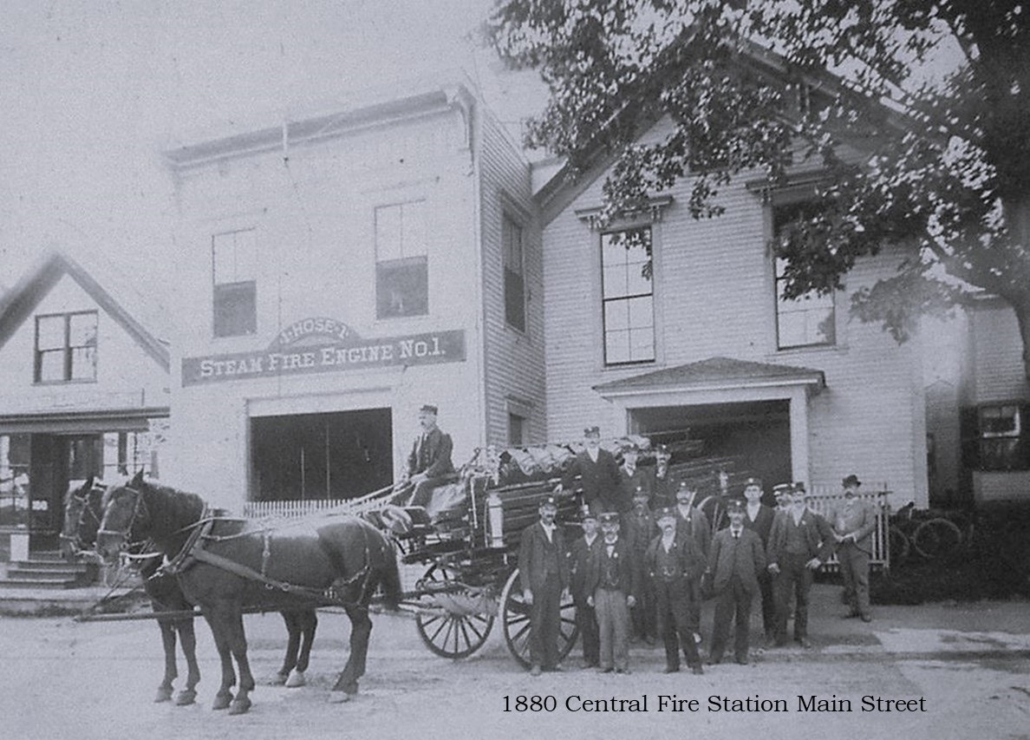
1880 Central Fire Station
by Scott Holst
As the Village of Waterville grew into a dense town where a single fire could threaten the lives of thousands, the village lacked the types of institutions that would fight these fires. In other parts of the country, firefighters were organized as volunteers or were paid for by insurance companies to combat the threat of fire.
The first response for Waterville was what would later be called a “bucket brigade.” Neighbors from all around the town would run to help or at least toss their buckets into the street for volunteers to fill with water and pass forward to be dumped on the fire.
Villages, Towns, and some Cities would appoint citizens to be fire wardens, and they were empowered to inspect all chimneys and to fine any violators of the fire rules enacted in their town. These men would make sure when the village was called upon, the fire was handled in a proper systematic fashion. Besides, getting the manpower to run the bucket brigades was not an easy task. Waterville’s first recorded fire wardens were established in 1802.
As firefighting equipment evolved from buckets to engines, the need for special training and tools emerged. Enter the creation of the fire companies. Waterville would form four fire companies, and each company would have a section of the town to protect, or assist the other companies.
Organized as a Village on July 23, 1802, Waterville did not begin to form any fire companies until 1809. The inhabitants of Waterville felt they needed something more substantial to protect against conflagrations, so in early 1810 an organization known as “Ticonic Village Corporation” was formed and this organization would become a separate entity removed from the Village of Waterville. They would run as a private organization, forming companies, installing cisterns throughout the Village and creating fire-related rules and regulations governing the fire department and the Village. The Corporation would work off tax money charged to the Village and loans from banks. Their first order of business was to purchase a fire engine and form a company. A hand tub was purchased in 1810, and a group of men were assigned to it and the Corporation was off and running.
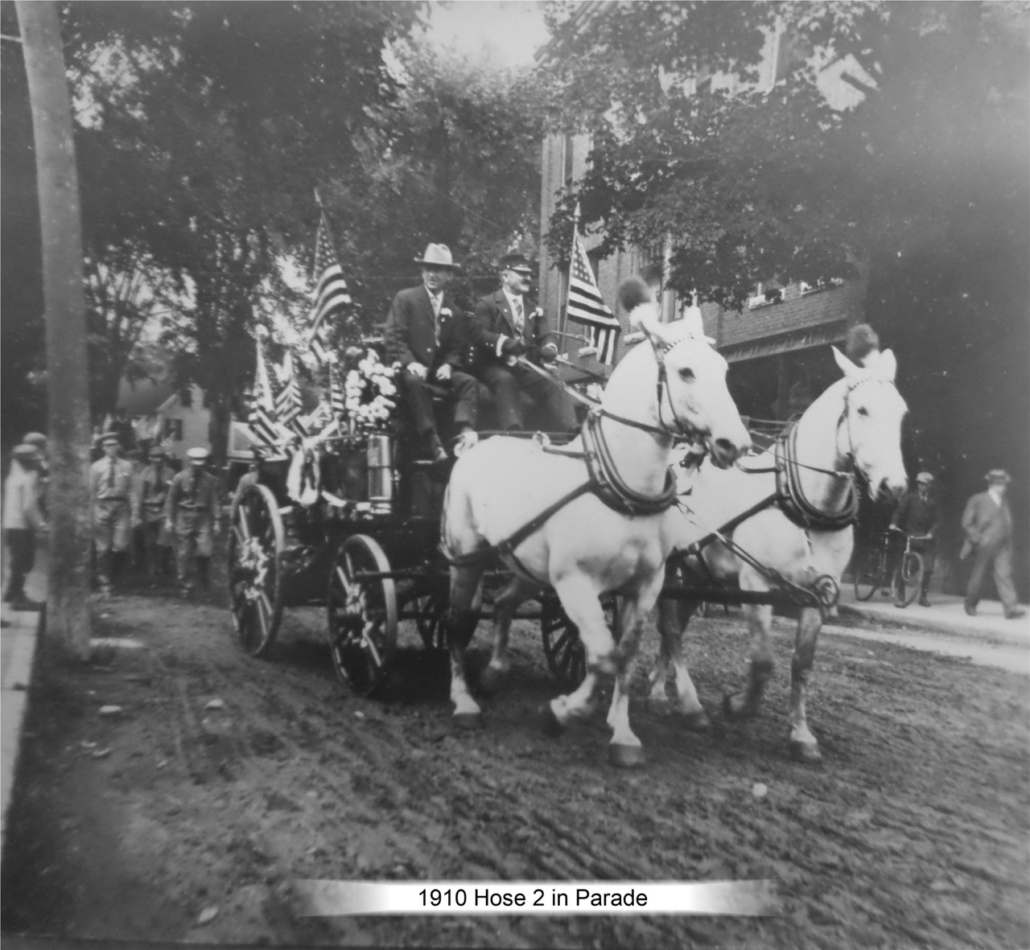
1910 Firemen’s Parade
They would also purchase new apparatus, fire equipment and hoses whenever they were needed. All the cisterns throughout Waterville in the 1800s and the installation of fire hydrants brought into service, were paid for and placed in by the Corporation. The Corporation would also purchase the first fire houses around Waterville. The fire house would generally be regular homes that were built and turned into firehouses, except for the Silver Street station, which the Corporation would purchase the land and build the station. The Corporation would vote at each yearly meeting for a Chief Engineer and two Assistants. The engine and hose company officers would be voted in from among their respected companies.
In last ten years of the Corporations life, it started to find itself in financial troubles. Organized in 1810 and which had no doubt done a great service to the citizens of Waterville, the Ticonic Village Corporation relinquished its charter on August 2, 1878. A hearing of the Legislature in the State Capital granted the closing of the Corporations charter, and the Town of Waterville officially took control over the fire department.
In the early history of fire engines, all fire apparatus of the era were pulled to fires by the people of the Village. This took many men, usually a dozen or more, to get the engine from the fire house to the scene of the fire. As the hand tubs and newly-developed steam engines, which were gaining popularity, grew in size and weight, horses were placed into service to pull these apparatuses.
Not every horse could serve as a fire horse. The animals needed to be strong, swift, agile, obedient and fearless. At the scene, they needed to stand patiently while embers and flames surrounded them. They needed to remain calm while the firefighters fought the blaze, and this was the case in all weather conditions and in the midst of a multitude of distractions.
It was a sad day at the fire station when a horse was declared unfit for duty. Many retired fire horses continued to work for the city in less strenuous positions, withering on the city farm or street department and some would be put out to pasture. Occasionally the noble beasts were put up for public auction but would at times become a fight between the town fathers and the firefighters. Horses became family and the firefighters did not want their noble horses to be miss cared for, so they would fight the sale of their horses. The gallant steeds might be purchased by junk drivers and delivery men. At times, the fire horses would forget their new roles and charge down the streets hauling a wagon after hearing a fire gong.
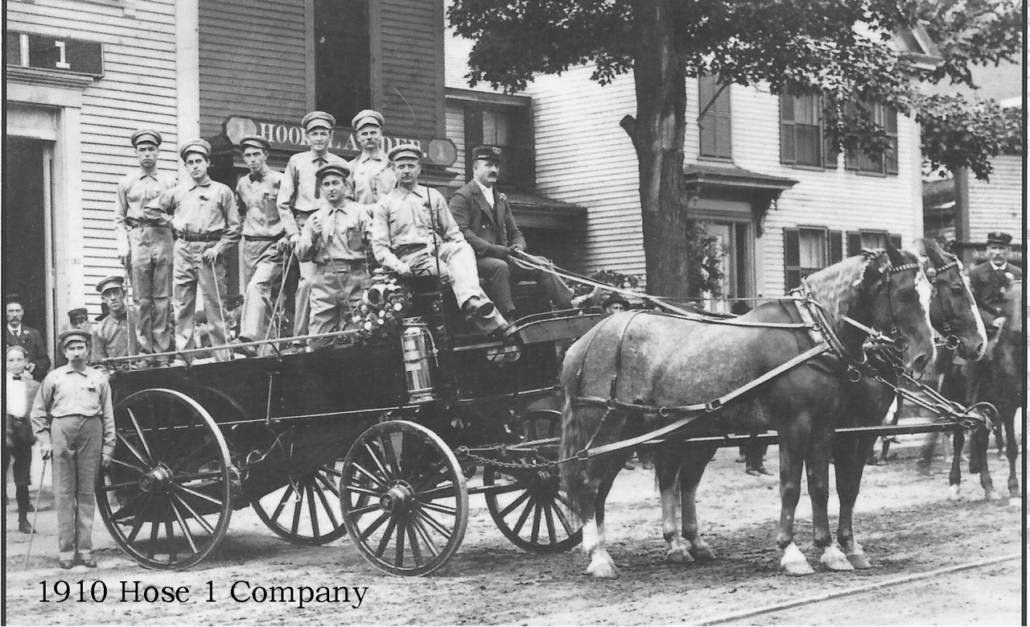
1910 Hose Company #1
The first recorded use of fire horses in the Village of Waterville came with the Hook & Ladder carriage that the Ticonic Village Corporation had in 1855. This apparatus was too heavy to be pulled by the firemen, so it needed to be pulled by horses, so the Corporation would appropriate funding in the fire department to pay the local stables for the uses of their horses. The department’s three hand tubs would soon follow suit and become retrofitted to be pulled by horses.
On July 25, 1928, the last Fire Horse would be removed from service and turned over the Street Department as the fire department would become fully motorized.
The history of water supply for fighting fire in Waterville was first recorded in the history books of the area when the first settlers came and settled on the edge of the Kennebec River and surrounding streams. Taking water from the river and streams was the means of cooking, drinking, bathing, washing clothes and firefighting. During a fire the settlers would take their buckets and form a chain from the river or stream to the fire. As time went on and the town would grow outward, so were new ways of getting water to fire.
The Kennebec River, Messalonskee Stream and Hayden Brook were the major water ways the Corporation would use to supply their fire department with the water in order to fight fire.
They would build “Cisterns also known as Reservoirs” throughout Waterville in the most populated areas. A cistern was an underground tank that holds water, and these tanks were built in different sizes depending on how much water was to be held. Throughout the Corporations’ existence, many cisterns were built all around Waterville.
In the 1870s, fire hydrants were becoming a source of fire protection that would be widely sought after and Waterville would jump on the band wagon and had hydrants installed throughout the city, even to this day.
In early 1892 the city would place a purchase for a Gamewell fire alarm system and the system would be installed and running by September 1892, at a cost of $2,300. The alarm would use bells in the fire houses and the St. Francis de Sales bell on Elm Street. When a fire alarm box was pulled, the church bell would tap out the number for all to hear.
Gamewell fire alarm boxes would be placed throughout the city and more would be added when the city started growing outward.
Today the city still uses the Gamewell fire alarm systems in schools and local businesses. This new system would be wireless and would be tied directly into the Waterville Communications Center and the fire station, where it is monitored around the clock.
In 1884, when the city hired its first full-time firefighter, this would create a two-tier system within the department, career and call. Career firefighters would be paid at a rate of pay different from a call firefighter as they were to remain in the firehouse for the ready at all times, where a call firefighters would be considered a part-time employee and would respond to alarms whenever an alarm was struck.
Waterville never had a true volunteer fire fighting force as each company in the department would receive money for their services and that money would be split and handed down to each member of the company. It would not be until the early 1900s that the city would pay their call firefighters a set rate for each hour that the firefighter would put it responding to calls or going to training.
Throughout its existence, the Waterville Fire Department has grown and adopted its way of taking care of its citizens and those who work or visit the city, in the utmost high quality of service. An extensive history book has been written that highlights every aspect of the life of the cities fire department and can be purchased at Waterville Central Fire station for your reading enjoyment.
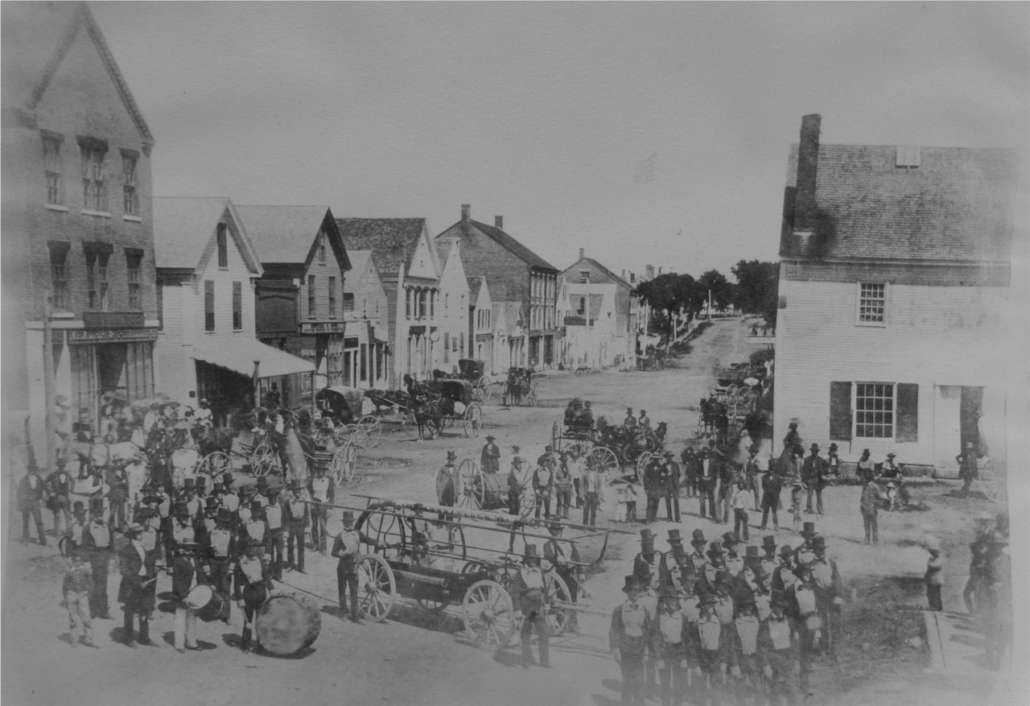
1855 Firemen’s Muster



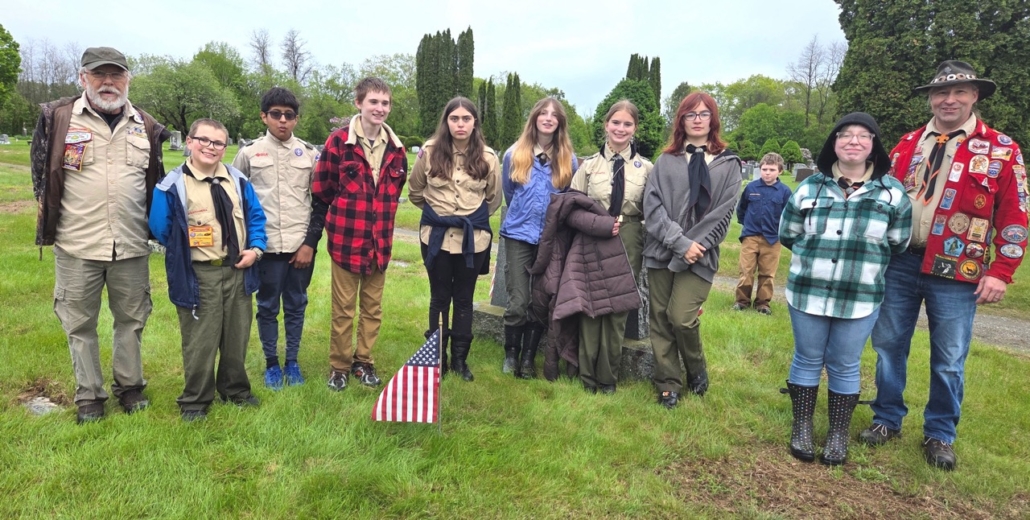
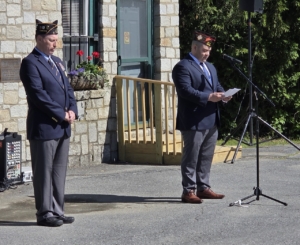
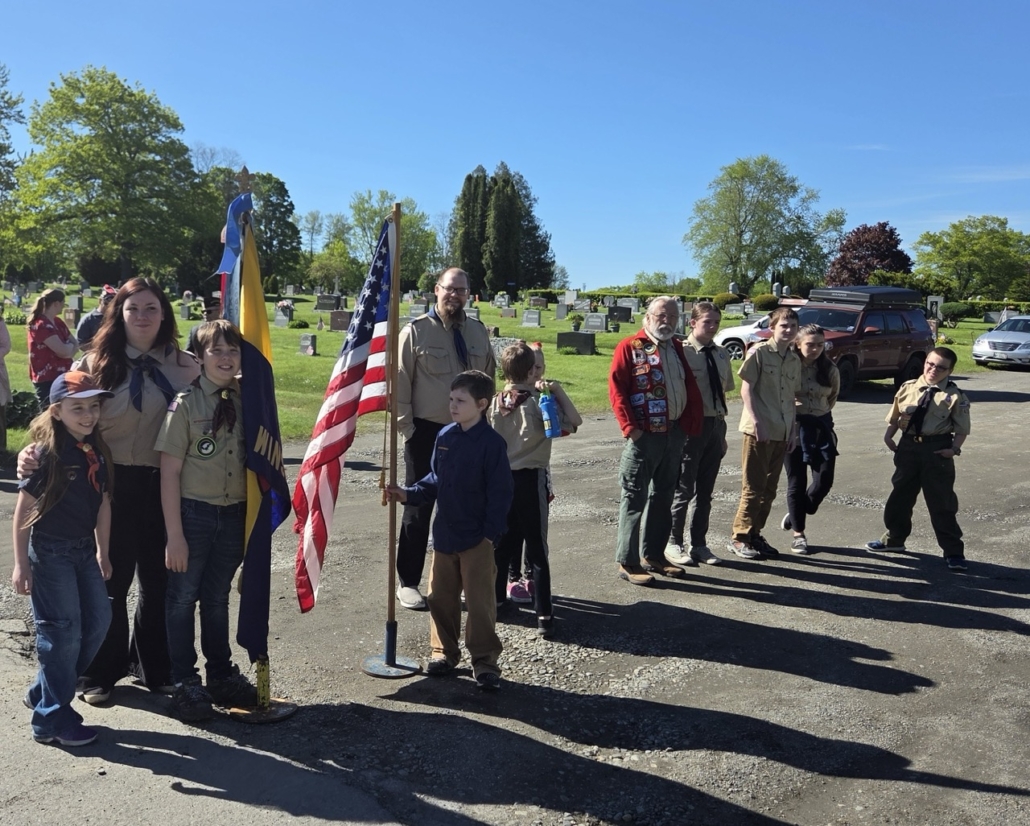











 Beginning April 7, Kennebec Water District will be replacing the water mains on Summer Street and Grove Street (between St. Francis Catholic Cemetery’s main entrance and Clark Street), in Waterville.
Beginning April 7, Kennebec Water District will be replacing the water mains on Summer Street and Grove Street (between St. Francis Catholic Cemetery’s main entrance and Clark Street), in Waterville.